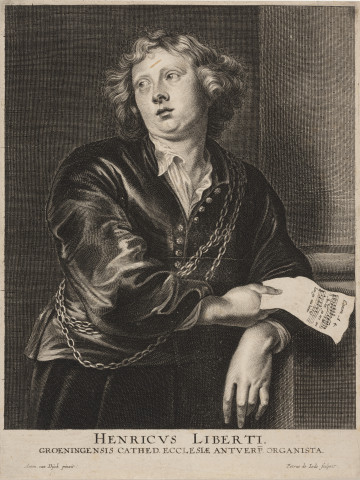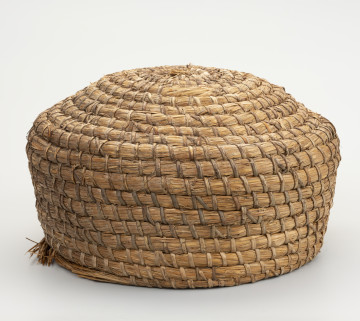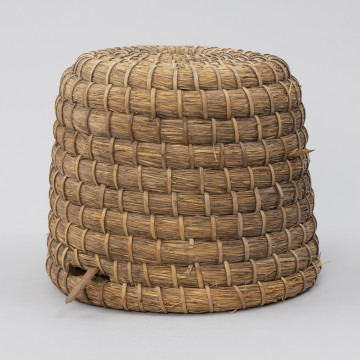
Portrait
circa 1632
National Museum in Szczecin
Part of the collection: Medieval sculpture of West Pomerania
Rappers typical of medieval culture were placed on church doors. In contrast to knockers - knocking handles - associated with the use of doors, they had a decorative and symbolic function. Fancily shaped, they usually took on a form alluding to the image of a lion's head, often holding a hoop in its open mouth. The lion's head symbolises both evils - Satan tamed at the threshold of the church, the House of God, as well as Christ Himself, who is the gate to the Kingdom of Heaven. The Szczecin rapper, lost during World War II, is known thanks to a surviving cast-iron copy made in the 19th century, based on a medieval original. The traditional lion's head was replaced by a griffin's head, which gave the rapper additional significance. The griffin as a heraldic sign allows us to associate the rapper's origin with the patronage activity of local rulers, the princes from the House of Griffin family. It is presumed that the founder of the medieval entablature was Barnim III, a meritorious person for the Pomeranian Church. It probably adorned the doorway of St Mary's Church in Szczecin, which served as the prince's necropolis, before St Otto's Church was built on Castle Hill. The extremely decorative frame around the griffin's head shows analogies, especially in terms of composition, to the entablature of the collegiate church in Kołobrzeg and the town hall in Lübeck. These exceptional works are associated with the work of Jan Apengeter, a master active in many Baltic centres in the first half of the 14th century.
Kinga Krasnodębska
Author / creator
Dimensions
cały obiekt:
Object type
sculpture
Creation time / dating
Creation / finding place
Identification number
Location / status

circa 1632
National Museum in Szczecin

1965
National Museum in Szczecin

1890 — 1910
National Museum in Szczecin
DISCOVER this TOPIC
Castle Museum in Łańcut
DISCOVER this PATH
Educational path